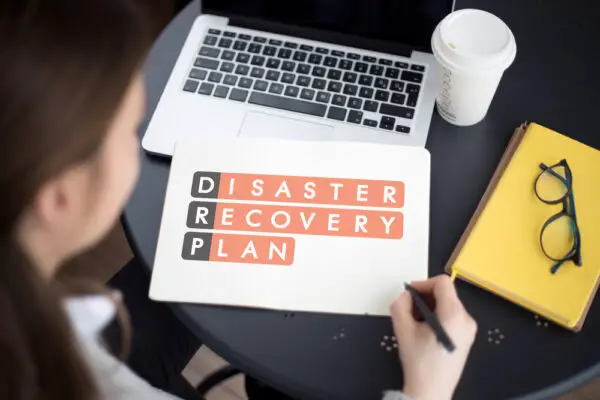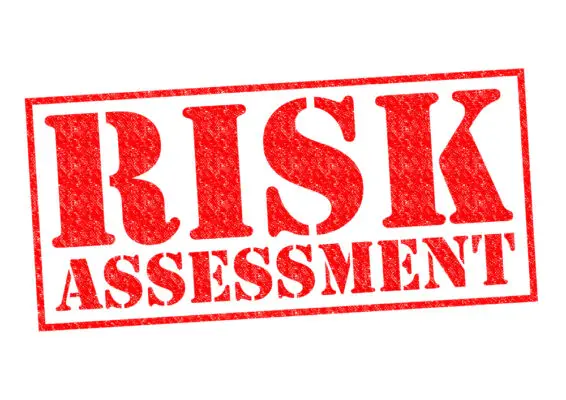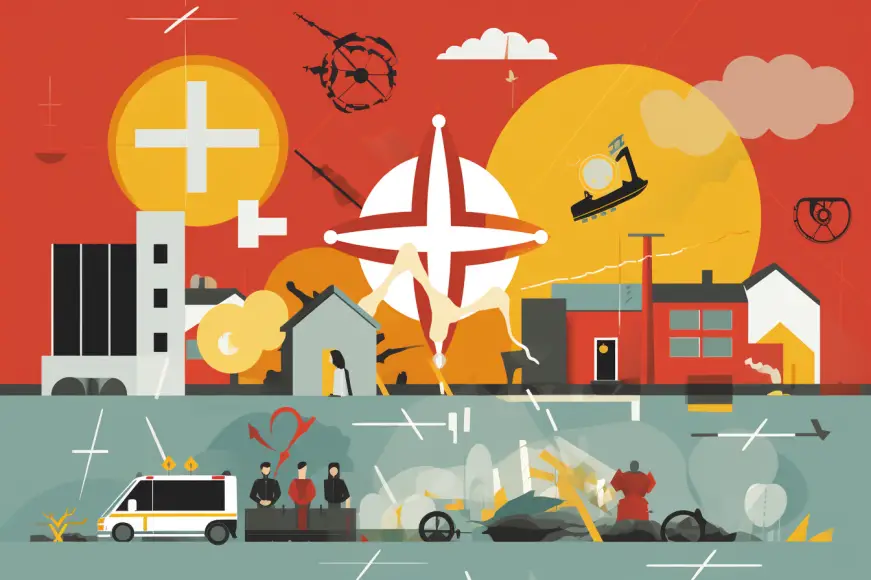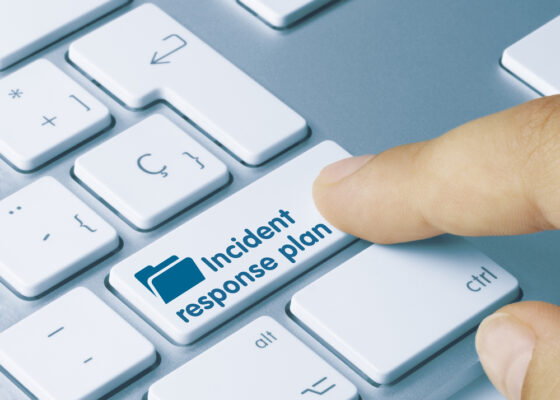Disaster Risk Management (DRM) is a systematic approach that aims to identify, assess and reduce the risks associated with natural disasters like earthquakes, floods, hurricanes and human-induced disasters like industrial accidents and terrorist attacks.
It combines prevention, mitigation, preparedness, response, and recovery activities, integrating all necessary aspects of planning, organization, leadership, control, and implementation.
Key components of DRM include:
Risk Assessment: This involves identifying potential hazards, evaluating the vulnerability of people and assets, and understanding the capacity to manage these hazards. The goal is to develop a realistic picture of the potential risk scenarios and their impacts.
Risk Reduction (Prevention and Mitigation): This involves taking steps to reduce the potential impact of disasters. It includes structural measures like flood defenses or seismic-proof buildings and non-structural measures like land-use policies or safety regulations.
Preparedness: This includes developing emergency response, evacuation, and communication plans. It also involves training and drills so individuals and organizations know what to do in a disaster.
Emergency Response: This is the provision of assistance or intervention during or immediately after a disaster to meet the life preservation and basic subsistence needs of those affected. It can include immediate rescue, relief, and protection services in a coordinated manner.
Recovery and Rehabilitation: This involves restoring affected areas to their previous condition. It includes the repair of physical infrastructure and the recovery of economic and social activity.
DRM aims to prevent new disaster risks, reduce existing risks, and manage residual risks, contributing to the strength, resilience, and sustainability of individuals, communities, cities, and countries.
The overall goal of DRM is to promote safer, more resilient societies at local, national, regional, and global levels.
Disasters are a constant threat in our world, and their impacts can be devastating. From natural calamities like earthquakes, floods, and hurricanes to man-made disasters such as oil spills and nuclear accidents, the consequences of these events can be long-lasting and far-reaching.
With the increasing frequency and intensity of disasters worldwide, it has become imperative to take proactive measures to minimize their risks and manage them effectively when they occur.
DRM aims to minimize human suffering and protect assets like infrastructure, buildings, crops, livestock, and ecosystems from the damaging effects of disasters. As such, DRM has become essential to sustainable development planning globally.

Understanding the Concept of Disaster Risk Management
The study of mitigating and responding to adverse events caused by natural or man-made phenomena is a complex and multifaceted field encompassing various disciplines such as emergency management, environmental science, engineering, public health, and social sciences.
Disaster Risk Management (DRM) is an approach that seeks to identify and analyze the risks posed by hazards and the vulnerabilities of communities to develop strategies for reducing disaster-related losses.
It involves various activities to minimize the impact of disasters on people’s lives, livelihoods, property, and environments.
Key components of DRM include risk assessment, prevention and mitigation measures, preparedness planning, response actions during emergencies, and post-disaster recovery efforts.
The importance of DRM lies in its ability to help communities become more resilient to disasters by identifying potential risks before they occur.
This proactive approach can save lives by preventing or reducing damages caused by disasters.
Moreover, DRM provides a framework for effective coordination among various stakeholders involved in disaster management.
The Benefits of DRM
Loss Reduction: DRM helps to reduce loss of life and property by identifying potential risks and implementing measures to mitigate them.
Resilience Building: Effective DRM helps build the resilience of communities, cities, and countries to withstand and recover from disasters. This is achieved by improving infrastructure, developing effective response plans, and promoting sustainable recovery.
Cost Savings: By investing in DRM, significant financial resources can be saved in the long term. The cost of preparing for a disaster is generally much less than the cost of recovery and rebuilding after a disaster.
Business Continuity: For businesses, an effective DRM strategy ensures business continuity even in the face of a disaster. This could include backup and recovery systems and plans for alternative operational sites.
Community Preparedness: DRM involves educating the community about potential risks and how to respond during a disaster. This leads to increased awareness and preparedness at the individual and community level.
Protection of the Environment: Many DRM strategies also involve environmental protection measures, which help to reduce the likelihood or impact of certain natural disasters.
Promotion of Sustainable Development: DRM encourages sustainable development practices by promoting resilience and preparedness, contributing to the achievement of broader economic and social development goals.
Improved Governance: DRM fosters improved governance by encouraging transparency, accountability, coordination, and participation in the planning and implementing risk reduction strategies.
Implementing effective risk reduction strategies through activities such as early warning systems or community-based disaster preparedness programs, communities can reduce their vulnerability to disasters while increasing their capacity to respond effectively when faced with them.
Also, DRM promotes sustainable development by encouraging better land-use practices that consider natural hazards like floods or earthquakes.
Identifying and Assessing Disaster Risks
Through a comprehensive evaluation and examination of potential adverse events, one can understand such occurrences’ likelihood and potential impact, allowing for informed decision-making regarding appropriate actions to mitigate the consequences.
Risk identification is the first step in this process, which involves identifying all possible hazards that could lead to a disaster. These hazards could be natural, technological, or human-induced.
Risk assessment is the next step in disaster risk management. It involves analyzing each identified hazard’s likelihood and potential impact on people, infrastructure, environment, and economy. This analysis helps prioritize risks based on their severity level and decide on appropriate mitigation measures.
A thorough risk assessment requires accurate data collection, reliable methodologies, and expert knowledge.
Identifying and assessing disaster risks are crucial to mitigating their impacts on communities and minimizing loss of life.
Integrating these steps into policy development at local levels can make communities more resilient to disasters over time by improving infrastructure standards or through better land use planning practices that reduce vulnerability to hazards like flooding or landslides.
Developing Disaster Risk Reduction Strategies
Developing disaster risk reduction (DRR) strategies is crucial to managing disaster risks. This process involves identifying appropriate actions that can mitigate the effects of potential hazards before they occur.
Stakeholder engagement is an essential aspect of developing DRR strategies. It involves involving all relevant stakeholders, including government agencies, civil society organizations, private sector actors, and affected communities in decision-making.
Stakeholders should be consulted to identify potential hazards, assess their impacts, and formulate mitigation measures. This approach ensures that the perspectives and interests of all parties are considered when crafting DRR strategies.
Resource allocation is another critical factor when developing DRR strategies. The availability and allocation of resources determine the effectiveness of any mitigation measure.
Investment in DRR activities is essential to ensure adequate resources are available for preparedness efforts at all national, regional, or local levels.
Inadequate funding for DRR activities leads to insufficient preparedness, which could hinder effective response efforts during a disaster.
Governments need to prioritize financing mechanisms that support comprehensive risk management policies so that communities are better equipped to prevent disasters from occurring or minimize their impact if they do happen.
Implementing Disaster Risk Management Plans
Disaster risk management plans are developed to reduce the probability and/or severity of losses resulting from a disaster. However, the success of any plan depends largely on how it is implemented.
One important factor in implementing a disaster risk management plan is budget allocation. Resources must be allocated effectively to support the implementation process, including training, equipment, and emergency response procedures funding. Without sufficient resources, communities may struggle to implement their plans effectively or respond adequately to disasters.
Another crucial aspect of effective implementation is stakeholder engagement. Stakeholders such as government agencies, non-governmental organizations (NGOs), private sector entities, and community groups should be involved in developing and implementing disaster risk management plans.
Successful disaster risk management plan implementation requires financial resources and stakeholder engagement. With these factors in place, communities can increase their ability to mitigate risks posed by disasters while promoting greater resilience in the face of adversity.
Evaluating the Effectiveness of Disaster Risk Management Measures
One way this is done is through cost-benefit analysis, which evaluates whether the benefits of implementing a particular measure outweigh its costs. This approach helps decision-makers prioritize actions that provide the greatest benefit and maximize limited resources.
Another key component of evaluating disaster risk management measures is community engagement. Involving communities in the planning and implementation process ensures that interventions are tailored to local needs and priorities, increasing their likelihood of success.
Moreover, involving residents increases buy-in and ownership over these initiatives, leading to sustained support for long-term disaster risk reduction efforts.
Evaluating the effectiveness of disaster risk management measures requires a comprehensive approach that considers quantitative data, such as cost-benefit analysis, and qualitative data, such as community feedback.
Frequently Asked Questions
What are the key challenges in implementing disaster risk reduction strategies in developing countries?
One of the critical challenges is capacity building, which refers to the ability of individuals and institutions to effectively plan for, respond to, and recover from disasters.
Many developing countries lack the necessary resources and expertise to develop effective disaster risk reduction plans and implement them at all levels of government.
Another challenge is resource allocation, as many developing countries have limited financial resources that must be prioritized among competing needs such as healthcare, education, and infrastructure development.
As a result, disaster risk reduction efforts may not receive adequate funding or attention.
To address these challenges, governments and international organizations must prioritize capacity-building initiatives and allocate sufficient resources towards disaster risk reduction efforts to build resilience against future disasters.
How can communities be effectively engaged in disaster risk management processes?
Engaging communities in disaster risk reduction processes can help to build resilience, improve communication channels, and enhance local knowledge.
It is important to establish effective communication strategies involving all community members, including marginalized groups and those most vulnerable to disasters.
This can be achieved through education and awareness-raising programs that provide information on how individuals can prepare for emergencies and take action during disasters.
Furthermore, community involvement should not be limited to preparedness activities but should include post-disaster recovery efforts.
Involving communities in disaster risk management can lead to more sustainable outcomes by empowering local actors as active agents in reducing their vulnerabilities and increasing resilience toward future disasters.
What role do insurance companies play in disaster risk management?
Insurance companies play a crucial role in disaster risk management by providing risk assessments and insurance policies to individuals and businesses.
Through risk assessment, insurers identify potential hazards and assess the likelihood of damage or loss from natural disasters such as earthquakes, floods, or hurricanes. Based on these assessments, they offer insurance policies that cover the financial losses incurred due to such events.
Insurance companies also encourage policyholders to implement preventive measures to reduce the severity of damages caused by natural disasters.
Additionally, insurers work with local governments and non-profit organizations to promote community resilience and reduce risks associated with natural disasters through awareness campaigns and education programs.
Insurance companies contribute significantly towards reducing the impact of natural disasters by protecting against financial losses while promoting prevention strategies through various initiatives.
What are the ethical considerations in disaster risk management, particularly in relation to vulnerable populations?
Ethical considerations in disaster risk management are critical, particularly for vulnerable populations. Ethical behavior is often ridiculed and mocked by those who believe that profit is the only goal of businesses and governments.
However, this attitude belies that ethical conduct is necessary for long-term success and sustainability.
In the case of disaster risk management, ethical considerations must be at the forefront of decision-making processes to ensure that vulnerable populations receive adequate protection from potential harm.
Vulnerable populations may include women, children, elderly people, or those with disabilities who are more susceptible to physical and emotional damage in a crisis.
How can technology be leveraged to enhance disaster preparedness and response efforts?
Tech solutions and training programs are increasingly leveraged to enhance disaster preparedness and response efforts.
With the advent of new technologies such as drones, social media platforms, and mobile applications, disaster responders can quickly assess damage, locate victims, and communicate with affected communities.
Furthermore, virtual reality simulations and online training programs offer a cost-effective way to train emergency responders before a disaster occurs.
Such tech solutions can potentially improve the speed and accuracy of responses during disasters while reducing risk for responders.
However, ethical considerations must be considered when developing and implementing these technologies to ensure they do not exacerbate existing vulnerabilities or create new ones for marginalized populations.

Conclusion
Understanding the concept of disaster risk management involves identifying and assessing potential risks, developing appropriate strategies to reduce these risks, and implementing plans that effectively manage disasters.
The aim of disaster risk management is not only to minimize the impact of natural hazards but also to build resilience in communities affected by such disasters.
Effective disaster risk management requires collaboration between stakeholders, including governments, non-governmental organizations (NGOs), and community members.
Identifying and assessing potential risks involves analyzing factors such as geography, climate change, socioeconomic status, infrastructure, and demographics. After identifying these risks, it is essential to develop strategies that consider each community’s unique needs.
The next step is implementing these plans through effective communication and coordination among all parties involved. Finally, evaluating the effectiveness of disaster risk management measures ensures that continuous improvements are made based on lessons learned from past experiences.
Disaster Risk Management aims to mitigate natural disasters’ negative impacts by identifying potential threats beforehand. Successful implementation demands a comprehensive approach to building resilience in communities affected by natural catastrophes.
Effective communication between governments, NGOs & communities can help identify potential dangers & establish efficient prevention mechanisms. Thus it’s crucial for every government & organization to prioritize careful planning & execution while managing future catastrophes collectively.

Chris Ekai is a Risk Management expert with over 10 years of experience in the field. He has a Master’s(MSc) degree in Risk Management from University of Portsmouth and is a CPA and Finance professional. He currently works as a Content Manager at Risk Publishing, writing about Enterprise Risk Management, Business Continuity Management and Project Management.


